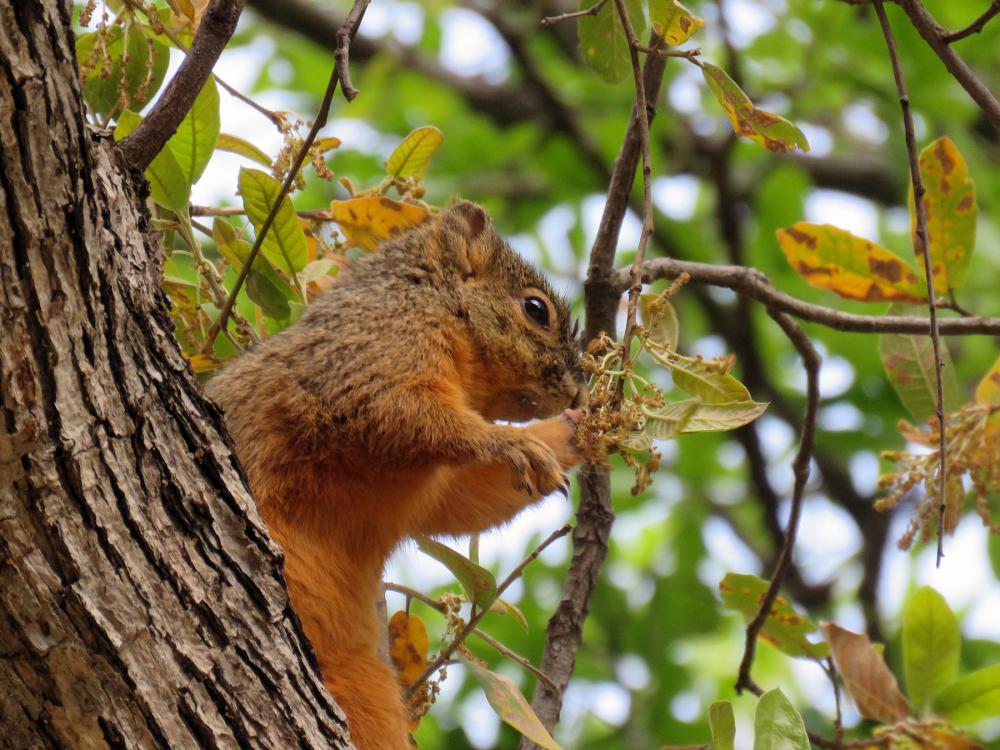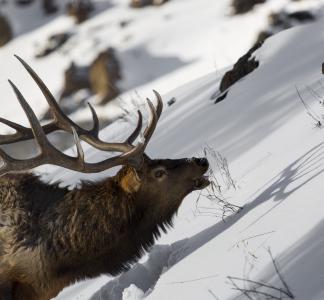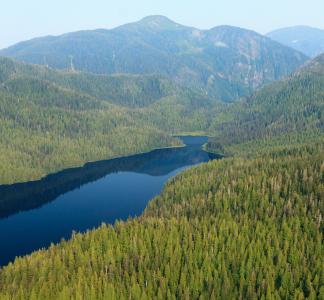Logging-free forests are critical for threatened wildlife

In the continental U.S., 35% of suitable habitat for woodland caribou (like this one in Canada's Jasper National Park) is in inventoried roadless areas
Thomas Hartmann via Wikimedia Commons
57% of vulnerable wildlife species have suitable habitat in “roadless” areas
Once upon a time, the big, split-hoof tracks of woodland caribou were common on the tundra and mossy forest beds of the North American West. Then came large-scale logging and other human disturbances.
Now, these regal animals’ numbers are deep in the red. In fact, the last woodland caribou known to habitually cross into the continental U.S. from Canada was removed by scientists for conservation purposes back in 2019.
A new study suggests protecting forests from logging and development offers vital refuge to sensitive wildlife species
A new study from Wilderness Society scientists suggests a common-sense corrective to the plight of the woodland caribou and other vulnerable wildlife: protect more forests from logging, road construction and other development.
Published in December 2021 in the journal Global Ecology and Conservation, the study demonstrates that “inventoried roadless areas”—sections of the National Forest System excluded from logging and road-construction—are disproportionately important as habitat for threatened wildlife. The data argue for even greater protection for these roadless areas, and strengthening the law that created them.
Take those woodland caribou. Just over 35 percent of their suitable habitat in the continental U.S. is found in roadless areas. Of all the “species of conservation concern” considered in the report, 57 percent have suitable habitat in roadless areas, and virtually all of these forest sections’ total “roadless” land area contains suitable habitat for at least one of those species.
The study sheds new light on the value of inventoried roadless areas to wildlife at a time when experts are sounding the alarm about a worldwide extinction crisis that has already wiped many species off the map. Road construction and logging compromise habitat in numerous ways, from disrupting migration pathways to putting animals at risk from vehicle traffic to introducing pollution and sediment into waterways.
Greater protection needed for “roadless” forests
Covering close to 100,000 square miles of U.S. Forest Service land, inventoried roadless areas are managed under the Roadless Area Conservation Rule of 2001 (commonly referred to as “the Roadless Rule”). But the protection they enjoy is considered tenuous. As the new paper points out, these stretches of forest are in “administrative purgatory” unless elevated to status as wilderness areas, national parks or the like. That means that while roadless areas are a bulwark against ecological disaster—something not well quantified before this study—they need further safeguards to fulfill their full potential.
If woodland caribou are ever to re-gain a foothold in the continental U.S., they will need ample intact habitat—much of it likely in the form of roadless forests
If all inventoried roadless areas in the continental U.S. gained fuller protection, the new study finds, it would sharply decrease the number of vulnerable wildlife species that are considered “poorly represented” in the nation’s network of protected lands and waters. Put simply, forests protected from destruction and development are a crucial part of the support system that helps animals thrive. If woodland caribou are ever to re-gain a foothold here, they will need ample intact habitat—much of it likely in the form of roadless forests.
Securing these stretches of habitat could not only supply a lifeline to sensitive species, but communities that rely on them. Bart George, a wildlife biologist for the Kalispel tribe, likened the loss of the last caribou in the lower 48 states to “losing a piece of the tribe.” Ensuring roadless forest lands stay healthy and unfragmented may be a key step toward making such communities whole again.

Just over 20% of suitable habitat in the U.S. for the Mexican fox squirrel is found in inventoried roadless areas
Brian Henderson, Flickr
What’s next for roadless forests?
Though the Roadless Rule is more than two decades old, it has still never been officially codified as a federal government regulation. We’re pushing Congress to pass the Roadless Area Conservation Act and make the rule permanent, protecting our nation's treasured forests indefinitely.
Additionally, the Forest Service should enhance its management of roadless areas to focus on conserving biodiversity by amending agency directives. That should be done with an eye toward the goal of protecting 30 percent of U.S. lands and waters by the year 2030, which experts say is a key step for averting the worst of the climate and extinction crises. We also recommend the agency adopt stronger protections in land management plans, such as recommending roadless areas for wilderness designation.
Taken together, these measures will help roadless forests—and the law that governs them—endure, for the good of wildlife and ecosystems.




